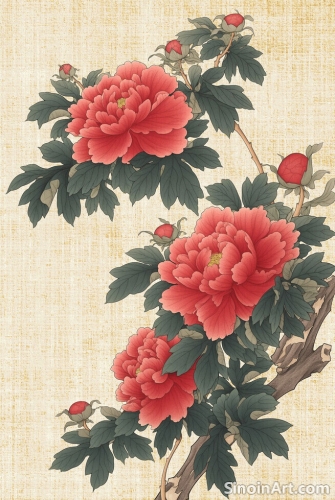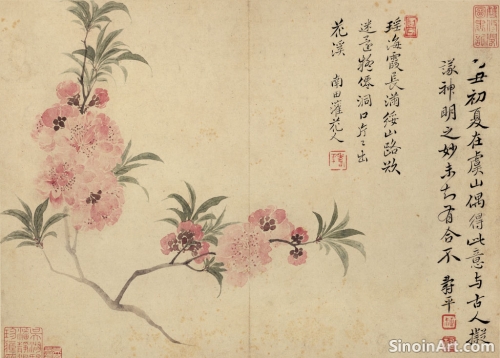Gongbi Painting and the Concept of "Qi Yun Sheng Dong"
|
While often associated with freehand painting (Xieyi), the concept of "Qi Yun Sheng Dong" (气韵生动), often translated as "spirit resonance and lifelike movement," also holds significance in understanding the aesthetic principles of Gongbi. Although Gongbi focuses on meticulous detail, a master artist seeks to infuse the artwork with a sense of vitality and inner energy, aiming to capture not just a visual likeness but also the underlying spirit of the subject.  The “Qi Yun” or “spirit resonance” element refers to the sense of vitality, energy, and life force that a work of art should possess. In Gongbi painting, this is not just about creating a technically perfect depiction of the subject matter; it is also about capturing the essence or inner spirit. Even within the constraints of the detailed technique, the artist seeks to imbue their work with a living energy.  The “Sheng Dong” or “lifelike movement” element reflects the artist’s ability to create a sense of dynamism and vitality within the static image. This can be achieved through subtle variations in line, color, and form, creating a sense of movement and life. The artist's ability to imbue the work with dynamism and energy is one of the markers of a masterpiece.  The pursuit of “Qi Yun Sheng Dong” in Gongbi painting requires a deep understanding of the subject matter, as well as a mastery of technical skills. The artist must be able to translate not only the visual appearance of the subject, but also its inner essence and the flow of its inner energy. This involves both technique and artistic vision. The pursuit of this principle is not just about creating a beautiful work of art; it is also about connecting with the vital energy of the universe. The goal is not merely to create a replica, but to infuse the painting with the artist’s own personal energy and understanding. The works of master painters are both beautifully detailed and deeply resonant. The concept of “Qi Yun Sheng Dong” provides a deeper understanding of the artistic and philosophical aims of Gongbi painting, reminding us that art is not just about technical skill but also about capturing the essence and energy of the world. The pursuit of this principle elevates the art form beyond the technical to the truly sublime. |
Tag : Qi Yun Sheng Dong, spirit resonance, lifelike movement, Chinese art theory, aesthetics of Gongbi
Related information
- The Role of Line in Gongbi: The Foundation of Precision
- Gongbi and the Depiction of Jewelry and Accessories
- The Gongbi Line: A Foundation of Precision and Expressiveness
- Gongbi Portraiture: Capturing the Essence of the Subject
- Famous Gongbi Artists: Masters of the Brush
Explores the critical role of line in Gongbi painting, detailing different types of lines and their contribution to the precision and expressiveness of the art.
This article explores how Gongbi painting depicts jewelry and accessories, highlighting the meticulous detail, use of line and color to convey textures and reflections, and how these objects contribute to the overall cultural and visual richness of the artwork.
Gongbi lines are characterized by their fineness, evenness, and consistent width. Artists utilize specialized fine-pointed brushes to create these lines, ensuring that every stroke is deliberate and controlled. The consistent thickness of the lines requires years of practice, and this skill is central to the Gongbi style. It is within the precise lines that the work begins to define itself.
This article explores Gongbi portraiture, highlighting its meticulous detail, precise use of line, delicate color layering, and its aim to capture not only the physical likeness of the subject but also their inner character and essence.
A profile of influential Gongbi artists throughout history, highlighting their contributions and styles.